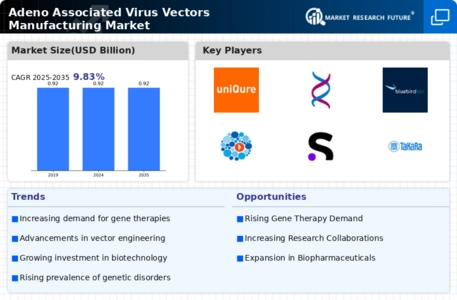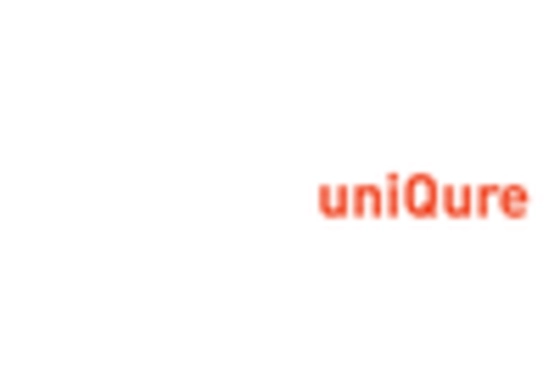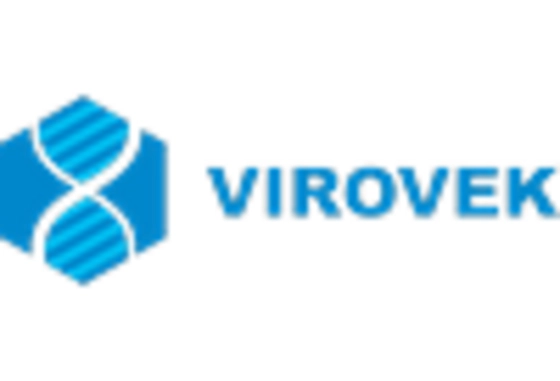Rising Demand for Gene Therapy Solutions
The increasing prevalence of genetic disorders and chronic diseases has led to a rising demand for innovative treatment solutions, particularly in the Adeno Associated Virus Vectors Manufacturing Market. As gene therapy emerges as a viable option for treating conditions such as hemophilia and muscular dystrophy, the need for effective delivery mechanisms becomes paramount. The market for gene therapy is projected to reach substantial figures, with estimates suggesting it could exceed several billion dollars by the end of the decade. This surge in demand is likely to drive investments in the manufacturing of adeno-associated virus vectors, which are essential for the successful delivery of therapeutic genes to target cells.
Increased Funding for Gene Therapy Research
The surge in funding for gene therapy research is significantly impacting the Adeno Associated Virus Vectors Manufacturing Market. Venture capital investments and government grants are being directed towards innovative gene therapy projects, which often rely on adeno-associated virus vectors for effective delivery. This influx of capital is enabling researchers and manufacturers to explore new applications and improve existing technologies. As funding continues to rise, it is anticipated that the market for adeno-associated virus vectors will expand, driven by the development of novel therapies and the increasing number of clinical trials aimed at addressing various genetic disorders.
Regulatory Support for Gene Therapy Products
Regulatory bodies are increasingly providing support for the development and commercialization of gene therapy products, which is positively impacting the Adeno Associated Virus Vectors Manufacturing Market. Initiatives aimed at expediting the approval process for gene therapies are encouraging manufacturers to invest in vector production. For instance, the introduction of fast-track designations and priority review pathways by regulatory agencies is facilitating quicker access to the market for innovative therapies. This supportive regulatory environment is expected to stimulate growth in the manufacturing sector, as companies seek to capitalize on the favorable conditions for bringing adeno-associated virus vectors to market.
Technological Advancements in Vector Production
Technological advancements in the production of adeno-associated virus vectors are significantly influencing the Adeno Associated Virus Vectors Manufacturing Market. Innovations such as improved purification techniques and enhanced transduction efficiency are enabling manufacturers to produce higher yields of vectors with greater purity. These advancements not only streamline the manufacturing process but also reduce costs, making gene therapies more accessible. The market is witnessing a shift towards automation and high-throughput systems, which could potentially increase production capacity and efficiency. As a result, the overall growth of the market is likely to be bolstered by these technological improvements, which enhance the feasibility of large-scale vector production.
Collaborative Efforts in Research and Development
Collaborative efforts between academic institutions, biotechnology firms, and pharmaceutical companies are playing a crucial role in advancing the Adeno Associated Virus Vectors Manufacturing Market. These partnerships are fostering innovation and accelerating the development of new therapies. By pooling resources and expertise, stakeholders are able to enhance the efficiency of vector production and improve the overall quality of gene therapies. The trend towards collaboration is likely to continue, as it enables participants to share knowledge and reduce the risks associated with research and development. This synergy is expected to drive growth in the manufacturing sector, as more effective adeno-associated virus vectors are developed and brought to market.


















Leave a Comment